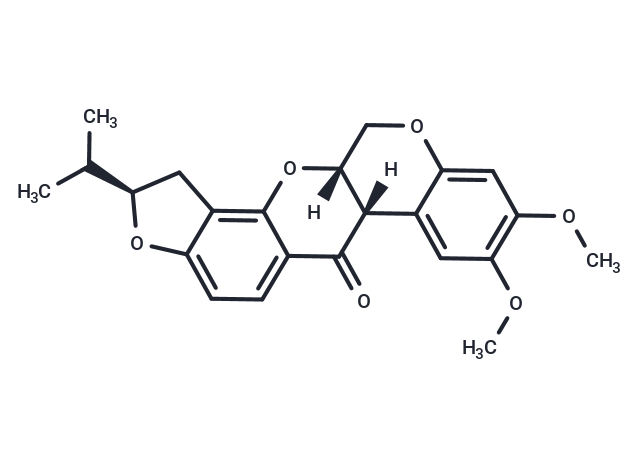Shopping Cart
- Remove All
 Your shopping cart is currently empty
Your shopping cart is currently empty

Dihydrorotenone is a potent mitochondrial inhibitor and probably induces Parkinsonian syndrome.

| Pack Size | Price | Availability | Quantity |
|---|---|---|---|
| 1 mg | $115 | In Stock | |
| 5 mg | $279 | In Stock | |
| 10 mg | $443 | In Stock | |
| 25 mg | $733 | In Stock | |
| 50 mg | $987 | In Stock | |
| 1 mL x 10 mM (in DMSO) | $335 | In Stock |
| Description | Dihydrorotenone is a potent mitochondrial inhibitor and probably induces Parkinsonian syndrome. |
| In vitro | Dihydrorotenone arrested human plasma cancer cells at the G0/G1 phase of the cell cycle. Dihydrorotenone inhibited cyclin D2 transactivation, thus inhibiting its mRNA expression. In addition, Dihydrorotenone upregulated the cell cycle repressors p21 and p53. Dihydrorotenone also increased the phosphorylation level of p53, suggesting the upregulated transactivation function of p53, which was confirmed by the induction of p21, a substrate of activated p53. Moreover, Dihydrorotenone downregulated AKT and ERK phosphorylation, an incentive of cell cycle progression. |
| Molecular Weight | 396.43 |
| Formula | C23H24O6 |
| Cas No. | 6659-45-6 |
| Smiles | [H][C@@]12COc3cc(OC)c(OC)cc3[C@]1([H])C(=O)c1ccc3O[C@H](Cc3c1O2)C(C)C |
| Relative Density. | 1.251g/cm3 |
| Storage | Powder: -20°C for 3 years | In solvent: -80°C for 1 year | Shipping with blue ice. | ||||||||||||||||||||||||||||||
| Solubility Information | DMSO: 27.5 mg/mL (69.37 mM), Sonication is recommended. | ||||||||||||||||||||||||||||||
Solution Preparation Table | |||||||||||||||||||||||||||||||
DMSO
| |||||||||||||||||||||||||||||||

Copyright © 2015-2025 TargetMol Chemicals Inc. All Rights Reserved.